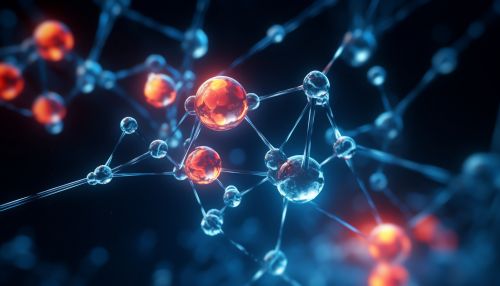Photodissociation
Introduction
Photodissociation, also known as photolysis, is a chemical reaction where a chemical compound is broken down by photons. It is the interaction of one or more photons with one target molecule. Photodissociation is not limited to visible light. Any photon with sufficient energy can affect the chemical bonds of a chemical compound. Because a photon's energy is inversely proportional to its wavelength, electromagnetic waves with the energy of visible light or higher, such as ultraviolet light, x-rays and gamma rays are usually involved in such reactions.


Mechanism of Photodissociation
The mechanism of photodissociation begins when a molecule absorbs a photon of light and goes from a ground electronic state to an excited electronic state. This is known as electronic transition. The energy of the incoming photon must be equal to the energy difference between the ground state and an excited state of the molecule for the transition to occur. The molecule can then undergo a process called internal conversion, where it goes from the excited electronic state to a vibrationally excited state on the ground electronic state potential energy surface.
From this vibrationally excited state, the molecule can then dissociate along the reaction coordinate to yield products. This is the photodissociation process. The products of photodissociation reactions are usually in a highly excited state and can undergo further reactions or lose energy by collision with other molecules.
Factors Influencing Photodissociation
Several factors influence the rate and efficiency of photodissociation reactions. These include the wavelength and intensity of the incident light, the nature of the molecule being dissociated, and the temperature and pressure of the environment in which the reaction is taking place.
Wavelength and Intensity of Light
The wavelength and intensity of the incident light are crucial factors in photodissociation. The energy of a photon of light is given by the equation E = hc/λ, where h is Planck's constant, c is the speed of light, and λ is the wavelength of the light. Therefore, the shorter the wavelength of the light, the higher the energy of the photons and the more likely they are to cause photodissociation.
The intensity of the light also plays a role. The higher the intensity, the more photons are available to interact with the molecules, leading to a higher rate of photodissociation.
Nature of the Molecule
The nature of the molecule also influences the photodissociation process. Molecules with weaker bonds are more easily dissociated by light. Additionally, the absorption spectrum of the molecule determines which wavelengths of light can cause photodissociation. Only those photons whose energy matches the energy difference between the ground state and an excited state of the molecule can cause photodissociation.
Temperature and Pressure
The temperature and pressure of the environment in which the photodissociation reaction takes place also influence the rate of the reaction. Higher temperatures can lead to a higher rate of photodissociation, as the molecules have more kinetic energy and are more likely to be in an excited state. Similarly, higher pressures can lead to a higher rate of photodissociation, as there are more molecules present to absorb the light.
Applications of Photodissociation
Photodissociation has a wide range of applications in various fields, including atmospheric chemistry, analytical chemistry, and laser technology.
Atmospheric Chemistry
In Atmospheric chemistry, photodissociation plays a crucial role in the formation and breakdown of ozone in the Earth's atmosphere. The photodissociation of molecular oxygen (O2) by ultraviolet light produces atomic oxygen (O), which can then react with other O2 molecules to form ozone (O3). Ozone can also be photodissociated by ultraviolet light to regenerate O2 and O.
Analytical Chemistry
In Analytical chemistry, photodissociation is used in mass spectrometry to fragment molecules and aid in their identification. This technique, known as photodissociation mass spectrometry, can provide information about the structure and composition of the molecule.
Laser Technology
In laser technology, photodissociation is used in the production of population inversion, a necessary condition for laser action. In a photodissociation laser, a suitable gas mixture is excited by light to produce an excited state that can undergo photodissociation. The products of the photodissociation reaction are in a highly excited state and can emit light, leading to laser action.
